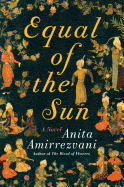
| Publisher: | Scribner | |
| Genre: | General, Fiction, Historical, Literary | |
| ISBN: | 9781451660463 | |
| Pub Date: | June 2012 | |
| Price: | $26 |
| Starred | Fiction |
by Anita Amirrezvani
Pari Khan Khanoom was a 16th-century Iranian princess, the favored daughter of the long-reigning Tasmahb Shah. Brilliant, powerful and ambitious, she was a shrewd political player in a time and place where being a woman meant seclusion and disempowerment. Yet Pari Khan Khanoom hasn't made many appearances in historical fiction, in spite of living a life ripe for it. In fact, unmarried and childless at the time of her brutal assassination at the age of 30, her name is unrecognizable to most anyone unfamiliar with Iranian history.
Anita Amirrezvani (The Blood of Flowers) tries to correct this injustice with Equal of the Sun, a novel that speculates on Pari's brief but extraordinary life. Pari ("a princess by birth... fierce but splendid in her bearing; a master archer, an almsgiver of great generosity; a poet of uncommon grace, the most trusted advisor to a shah, and a leader of men") was a major political force in the chaotic, bloody aftermath of her father's death, and the novel follows her as she navigates--and manipulates--the explosive tensions and calamitous betrayals of the court.
Equal of the Sun isn't just Pari's story, however. It's narrated by her closest servant and ally, a eunuch named Javaher whose (fictional) history rivals hers in drama and scope. As the two of them plot to restore peace and prosperity to the court, they develop an intense friendship--and that complex, powerful bond is just as fascinating as the politics that dictate it. --Hannah Calkins, blogger at Unpunished Vice

| Publisher: | Knopf | |
| Genre: | Fiction, Psychological, Family Life, Literary | |
| ISBN: | 9780307596925 | |
| Pub Date: | June 2012 | |
| Price: | $25 |
| Fiction |
by Alix Ohlin
One of the great attractions of reading fiction is getting inside a character's head--it's a level of access we rarely have with anyone else. In the psychologically astute, emotionally resonant Inside, Alix Ohlin allows the reader to know her characters more fully than any of them will ever know each other.
The linchpin of Inside is Montreal therapist Grace Tomlinson. Recently divorced, preoccupied with a teenage client, Grace is skiing alone when she almost literally stumbles across a man in the midst of a suicide attempt. He survives, and she is drawn to him, leading to a relationship that blurs the lines between personal and professional. Her ex-husband, Mitch, also a therapist, is attempting to move on; despite living in the same city, he and Grace won't cross paths again for several years. Meanwhile, charismatic teenage Annie slips away from Montreal and winds up in New York City, trying to pursue an acting career. She stumbles across someone, too--an uncomfortably familiar teenage girl--and finds herself recalling her old therapist.
While they are physically apart for stretches of the novel, Ohlin's characters remain inside one another's heads, and their stories have parallels and connections that they may never know about--although the reader, having an inside vantage point, will want to find them. Inside is a quiet novel, populated with beautifully drawn, complex characters that get inside the heart as well as the head. --Florinda Pendley Vasquez, blogger at The 3 R's Blog: Reading, 'Riting, and Randomness
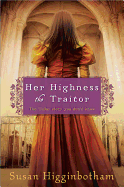
| Publisher: | Sourcebooks Landmark | |
| Genre: | General, Fiction, Historical | |
| ISBN: | 9781402265587 | |
| Pub Date: | June 2012 | |
| Price: | $14.99 |
| Fiction |
by Susan Higginbotham
People may know that Lady Jane Grey was briefly the queen of England during the 16th century, but the story of how she came to the throne is probably unfamiliar to most readers. In Her Highness, the Traitor, Susan Higginbotham turns the story of Jane's short life into a fascinating novel.
Lady Jane Grey, King Henry VIII's great-niece, was fourth in line to the throne (after Mary and Elizabeth Tudor, then her mother Frances). As young King Edward visibly sickened, the scheming of those close to the throne became more complicated, and the Greys found themselves in the midst of it. Meanwhile, Jane Dudley, wife of the powerful Duke of Northumberland, loved her eight children dearly, but she has never liked the Grey family--until King Edward found it politically expedient to marry the teenage Jane to Northumberland's only slightly older son, Guildford. The marriage united the two pivotal families, and after Jane was crowned, their futures were bright--until Mary Tudor fought back against Jane's ascension. Suddenly, the Greys and the Dudleys were in a very precarious position.
Told in alternating chapters by Frances Grey and Jane Dudley, Her Highness, The Traitor tells the story of two mothers united in the quest to save their families from destruction. The language is occasionally a bit anachronistic, but what the modern tone lacks in historical accuracy it gains in making the dread of these two women all too real, letting the reader vividly experience the terror of the Tudor era. --Jessica Howard, blogger at Quirky Bookworm

| Publisher: | W.W. Norton | |
| Genre: | Suspense, Fiction | |
| ISBN: | 9780393064025 | |
| Pub Date: | June 2012 | |
| Price: | $25.95 |
| Starred | Fiction |
by Tom Wright
Like his literary antecedent Huck Finn, Jim Bonham ("Biscuit"), the young narrator of Tom Wright's What Dies in Summer, is a fatherless adolescent being "civilized" by a sharp-tongued older woman, his grandmother Gram. Rather than the Mississippi River, however, he navigates a 1950s south Dallas turf of petty crime, sneaked cigarettes and beer and sex fantasies involving the public swimming pool. Biscuit's world abruptly changes when his cousin Lee Ann ("L.A.") shows up at Gram's house after running away from her abusive father and hard-drinking mother. Biscuit and L.A. form a strong bond when they stumble on the naked body of a mutilated girl in the weeds along the railroad tracks and are caught up in a local manhunt for a sadistic serial killer.
While Wright's first novel has the bones of a murder mystery, its power is in the refreshing voice of Biscuit as it carries us through the murkier mystery of adolescence. Wright brushes his young hero up against a motley cast of characters who give the often bewildered Biscuit the chance to reflect on their frequently humorous eccentricity and occasionally sordid violence.
As Biscuit and L.A. struggle with their own broken families, their involvement with the police and their recognition of the power of sex, Biscuit finds himself growing up. Although he helps solve the murder mystery, the mystery of life remains before him. --Bruce Jacobs, founding partner, Watermark Books & Cafe, Wichita, Kan.
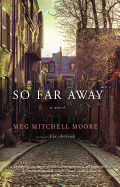
| Publisher: | Reagan Arthur Books | |
| Genre: | Fiction, Contemporary Women, Literary | |
| ISBN: | 9780316097697 | |
| Pub Date: | May 2012 | |
| Price: | $25.99 |
| Fiction |
by Meg Mitchell Moore
Meg Mitchell Moore's debut novel, The Arrivals, was a well-received work that examined the complicated relationships that make up the modern family. With So Far Away, she will undoubtedly continue to engage readers while narrowing her focus to mothers and daughters.
So Far Away melds the story of three women, each struggling with separation from family, each burdened by a secret. Kathleen, a researcher at the Massachusetts State Archives, is a widow estranged from her runaway daughter. Natalie, a 13-year-old whose family has fallen apart after her parents' divorce, is the target of cyber-bullying by her former best friend. When Natalie discovers a long-lost journal in a box from the basement, she seeks Kathleen's help reading it for use in a school project. Through the journal Kathleen and Natalie are introduced to Bridget, a 20-year-old Irish girl who immigrated to the U.S. in 1925 to enter into service with a family in Massachusetts; she ends her time with the Turner family after a terrible tragedy--and with an untold burden.
Moore's prose allows the reader to move seamlessly between the women's stories, yet it is clear that Bridget's journal provides a circumstantial yet necessary connection between Kathleen and Natalie. This connection, between a mother and a daughter who are unrelated, may just provide the solace that both need to unburden themselves of their secrets, make peace with their families and move forward with their lives. --Roni K. Devlin, owner of Literary Life Bookstore & More
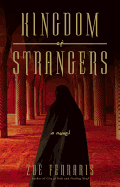
| Publisher: | Little, Brown | |
| Genre: | Suspense, Crime, Fiction, Literary | |
| ISBN: | 9780316074247 | |
| Pub Date: | June 2012 | |
| Price: | $25.99 |
| Starred | Mystery & Thriller |
by Zoe Ferraris
In Kingdom of Strangers, Zoë Ferraris (City of Veils) takes mystery lovers back to modern Saudi Arabia, where religion is law and forbidden passion carries a death sentence.
When 19 female corpses, their hands cut off, are discovered in the desert outside Jeddah, Inspector Ibrahim Zahrani must spearhead the hunt for a serial killer while his own life falls apart. Irritated with his wife's religious fanaticism and concerned about his son's failing marriage, Ibrahim also shoulders his daughter-in-law's terrible secret. Then Sabria, his Filipino mistress, vanishes without a trace, but Ibrahim is unable to make inquiries without confessing their affair. Desperately worried, he takes Katya Hijazi from the women-only police lab into his confidence, and she agrees to make inquiries for him.
Meanwhile, Katya is struggling to decide whether she can take her relationship with her Bedouin paramour, Nayir, to the next level without sacrificing any chance at furthering her career, already a difficult proposition for a woman in Saudi society. Beyond the scope of their personal worries, Katya and Ibrahim both work frantically to find the identity of the so-called Angel Killer before his next victim dies.
Ferraris lifts the veil from a culture where apparent virtue masks violence. Katya's struggle for professional advancement in the face of societal prejudice against women is eye opening, the lack of female empowerment in Saudi culture clearly exemplified. As the investigation reaches its surprising conclusion, Ibrahim and Katya's choices change their lives forever. This sensitive and enlightening mystery is sure both to move and to chill its readers. --Jaclyn Fulwood, blogger, Infinite Reads
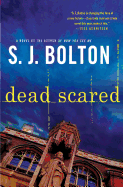
| Publisher: | Minotaur | |
| Genre: | Police Procedural, Fiction, Mystery & Detective, Women Sleuths | |
| ISBN: | 9780312600532 | |
| Pub Date: | June 2012 | |
| Price: | $25.99 |
| Mystery & Thriller |
by S.J. Bolton
Detective Constable Lacey Flint thinks she is going undercover as an attractive but neurotic student at Cambridge University in the hopes of exposing whoever might be driving students to commit suicide at an alarming rate and by violent means. The longer she spends living on campus and undergoing hazing and humiliation, however, and the more she learns about those earlier suicide cases, the less clear her role becomes. The university counselor who is her only contact is clearly living in fear, as are many of the women around her, and Lacey begins to undergo the same out-of-body experiences and gruesome nightmares described by the girls who've killed themselves. Is Lacey herself at risk?
The enigmatic DC Flint, introduced in 2011's Now You See Me, has a storied past that Bolton leaves largely unrevealed--a trait shared by many other characters. Alternating with Lacey's first-person perspective, the novel regularly checks back with her superior officer, Detective Inspector Mark Joesbury, who struggles with the truth of what he's sent Lacey into. They share a shadowy past and some chemistry, but this is one of several aspects left shrouded in mystery, adding to the compelling, suspenseful mood established by thematic elements like evil clowns, sexual abuse, gory scenes of suicide and a panoply of psychiatric issues. Fast-paced, spooky and uncomfortable, Dead Scared keeps its reader on edge until the final paragraph. --Julia Jenkins, librarian and blogger at pages of julia
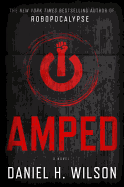
| Publisher: | Doubleday | |
| Genre: | General, Technological, Fiction, Science Fiction, Fantasy, Thrillers | |
| ISBN: | 9780385535151 | |
| Pub Date: | June 2012 | |
| Price: | $25 |
| Science Fiction & Fantasy |
by Daniel H. Wilson
In a near-future America, technology that can artificially enhance the abilities of people with intellectual and physical disabilities is also used to amplify the abilities of some individuals far beyond un-augmented intelligence and skill. When a beautiful young student with amplified intellectual abilities jumps to her death, teacher Owen Gray comes face to face with the implications of his own device, implanted by his father ostensibly to control Owen's epilepsy.
After his father is killed in a bombing by anti-amp terrorists, Owen searches for his father's old medical partner, tracking him to a segregated trailer park where he lives surrounded by non-augmented humans with guns. As Owen settles into the park, making it his new home, he learns that his implant is far more than a simple control device.
The novel veers through themes of discrimination, disability and assistive technology with flair. As all good science fiction does, Amped asks tough questions, filtering them through intense action and human drama. At what point are we enhancing people to an unfair advantage? Is it jealousy or fear that motivates hatred and discrimination? Does technology of this type deny us our basic humanity? How do we cope with such advantages as a society and a species?
Daniel H. Wilson (Robopocalypse) does a fine job of posing these questions to readers without answering them himself. Amped is an action-focused, character-driven tale of technology and the human mind, enhanced or not. --Rob LeFebvre, freelance writer and editor

| Publisher: | Crown | |
| Genre: | Health & Fitness, Modern, General, History, Biography & Autobiography, Social Science, Safety, 20th Century, Disease & Health Issues | |
| ISBN: | 9780307955630 | |
| Pub Date: | June 2012 | |
| Price: | $25 |
| Biography & Memoir |
by Kristen Iversen
In Full Body Burden, Kristen Iversen (Molly Brown: Unraveling the Myth) tells the intertwined stories of her two greatest childhood fears: her father's alcoholism and Rocky Flats--for almost 40 years, the secret source of the plutonium "pits" at the center of hydrogen bombs. Located only a few miles from Iversen's childhood home in Bridledale, Colo., the plant loomed mysteriously in the local imagination. Few people actually knew what the plant produced; Iversen's mother guessed it made "cleaning supplies." While Bridledale and neighboring communities wore a veneer of suburban heaven, under the surface, children and adults were dying from exposure to the plant's radioactive contaminants--some quickly, others only after decades of exposure and long battles with cancer.
Meanwhile, within Iversen's own home, another kind of disintegration was at work in her father's unexplained nights "at the office," calls from the local police and the half-full bourbon bottles clumsily stashed throughout the house. Like her knowledge of Rocky Flats's radioactive threat, Iversen's realization that her father's alcoholism was the force tearing her family apart grew gradually.
Iversen weaves her lucid, heart-wrenching memoir of a family struggling to keep itself together with a keen exploration of the nuclear havoc wreaked by Rocky Flats. Together, the two tales create a powerful account of coming of age under a mushroom cloud. --Dani Alexis Ryskamp, blogger at The Book Cricket

| Publisher: | Fordham University Press | |
| Genre: | Literary Criticism, General, Language Arts & Disciplines, Social Science, Popular Culture, Linguistics, Shakespeare | |
| ISBN: | 9780823242054 | |
| Pub Date: | June 2012 | |
| Price: | $26 |
| Essays & Criticism |
by Marjorie Garber
Marjorie Garber is primarily a Shakespeare scholar, but she also takes on many other subjects and does them well. Loaded Words moves easily from "high" to "low" culture, drawing from a variety of sources. "Mad Lib," for example, draws upon Shakespeare (of course), but also Hitchcock (espionage), The Manchurian Candidate, Mad magazine and Mad Men (advertising) to show how culturally loaded a word like "mad" or "madness" is. Garber almost gushes with excitement over the famous Cranach edition of Hamlet, the "finest in the world," as she explores the historical impact of Shakespeare and his play, while "Our Genius Problem" chastises us all for the sloppy way we use the word "genius"--as she advises, "it may be time to go cold turkey for a while."
Three essays in the collection examine a subject dear to Garber's heart, the importance of the humanities; another on Shakespeare shows us how we can read in "slow motion." And conservative readers may not like her piece in praise of radicals and radical education--loaded words today indeed. You don't need to be a literary scholar to enjoy these provocative essays, as Garber demonstrates that "all words are loaded, and that they are, inescapably, both overbrimming and biased, or weighted." --Tom Lavoie, former publisher
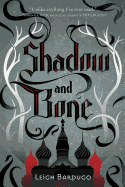
| Publisher: | Holt | |
| Genre: | General, Fairy Tales & Folklore, Science Fiction, Fantasy & Magic, Juvenile Fiction | |
| ISBN: | 9780805094596 | |
| Pub Date: | June 2012 | |
| Price: | $17.99 |
| Children's & Young Adult |
by Leigh Bardugo
This gripping debut novel, with a touch of magic and romance, is about two orphans thrown together during a century-old war and will keep readers burning the midnight oil.
Leigh Bardugo sets her tale in a Russia-like land called Ravka, where Grisha (practitioners of "the Small Science," or "witches," as the peasantry calls them) aid Ravka's king, and peasants subsist in a wartorn land. The orphaned protagonists, Alina Starkov and Malyen Oretsev, grew up in the home of Duke Keramsov, who opened up his estate as a refuge for orphans and war widows. Now 18, Alina, who narrates, and Mal serve in the King's First Army. As they cross the dreaded Shadow Fold, which separates Ravka from its only shoreline, hundreds of volcra--vulture-like, sightless birds with slashing teeth--attack the crew. The volcra threaten Mal's life, and in Alina's effort to save him, she unwittingly unleashes a blinding light that scares off the predators. Her talent attracts the most powerful Grisha of all, The Darkling. He recognizes Alina as a Sun Summoner and whisks her away, separating her from Mal, the only sense of home she's ever known.
As Alina becomes seduced by the attentions of The Darkling himself, she must choose between using her powers in service of someone else's plans or embracing her power to do what she believes is right. This first book of a planned series feels complete, yet it beckons readers for the next installment for answers about the fate of Ravka and some key characters. --Jennifer M. Brown, children’s editor, Shelf Awareness
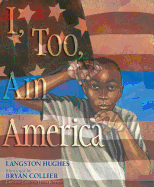
| Publisher: | Simon & Schuster | |
| Genre: | People & Places, Juvenile Nonfiction, General, United States - African-American, Poetry | |
| ISBN: | 9781442420083 | |
| Pub Date: | May 2012 | |
| Price: | $16.99 |
| Children's & Young Adult |
by Langston Hughes, illust. by Bryan Collier
Caldecott Honor artist Bryan Collier (Dave the Potter) brilliantly reimagines a poem by Langston Hughes as a train ride through history, witnessed by an African American Pullman porter.
Fragments of stars, patches of stripes float on the endpapers. A train sweeps through a cotton field: "I, too, sing America." Readers then meet the narrator, a Pullman porter peering through the porthole window of the train's galley kitchen: "I am the darker brother." Stars and stripes create a veil over his soulful eyes, his pressed uniform and cap. Three other African American men prepare the food in that galley kitchen. Collage artwork incorporates photos of criss-crossed pie crust, vegetables and freshly baked rolls. Despite his service to wealthy white passengers in plush surroundings, the narrator "laugh[s] and eat[s] well,/ And grow[s] strong." Here Collier suggest a fortifying of the intellect, as the man collects discarded magazines and books. These he scatters along the train's path. Collier depicts the pages fluttering through the sky, landing in cotton fields, and later, along subway tracks that connect the city blocks of Hughes's native Harlem. The images end with a modern boy, his face full of hope, peering between the ghosted stripes of the American flag: "I, too, am America."
The exceptional visual imagery echoes the legendary train trip taken by an 18-year-old Langston Hughes to see his estranged father--the trip that inspired his "The Negro Speaks of Rivers" ("My soul grows deep like the rivers"). Collier, too, chronicles a journey from past to present, of hope and healing. --Jennifer M. Brown, children's editor, Shelf Awareness

| Publisher: | Viking | |
| Genre: | Friendship, Love & Romance, Social Issues, Juvenile Fiction | |
| ISBN: | 9780670012251 | |
| Pub Date: | May 2012 | |
| Price: | $17.99 |
| Children's & Young Adult |
by Susane Colasanti
Susane Colasanti's (Something Like Fate; So Much Closer) latest lead character, a victim of bullying, narrates with an authentic voice in a novel that may well unite teens everywhere.
Noelle Wexler is counting down the days to high school graduation so she can escape Middle of Nowhere, USA. She hopes to make the world a better place, after it's been so harsh to her ("If we're not improving the world in some way, then what's the point?"). Since ninth grade, Warner Talbot has humiliated her for being so poor that she's eaten mayonnaise and mustard sandwiches during lunch. Carly, who's also been "obsessed with bullying" Noelle for three years, physically harasses her. Between getting publicly stood up by her almost-boyfriend Matt, and her neglectful and delusional mother, Noelle feels weak and "impossible to love."
Noelle knows that "[o]ne thing about being bullied is that you quickly learn how to avoid the people who make your life miserable." While this isn't always easy, Noelle does find friends who are true to themselves despite what anyone else thinks of them, such as Simon Bruckner, an "outsider by choice," who encourages Noelle to join the school's literary magazine, and Julian Porter, who cares for her, much to her disbelief.
Keep Holding On is a brave and sensitive novel for bullied teens that assures them that life gets easier, sometimes by finding the strength to speak up and take a stand. --Adam Silvera, assistant, Books of Wonder, New York